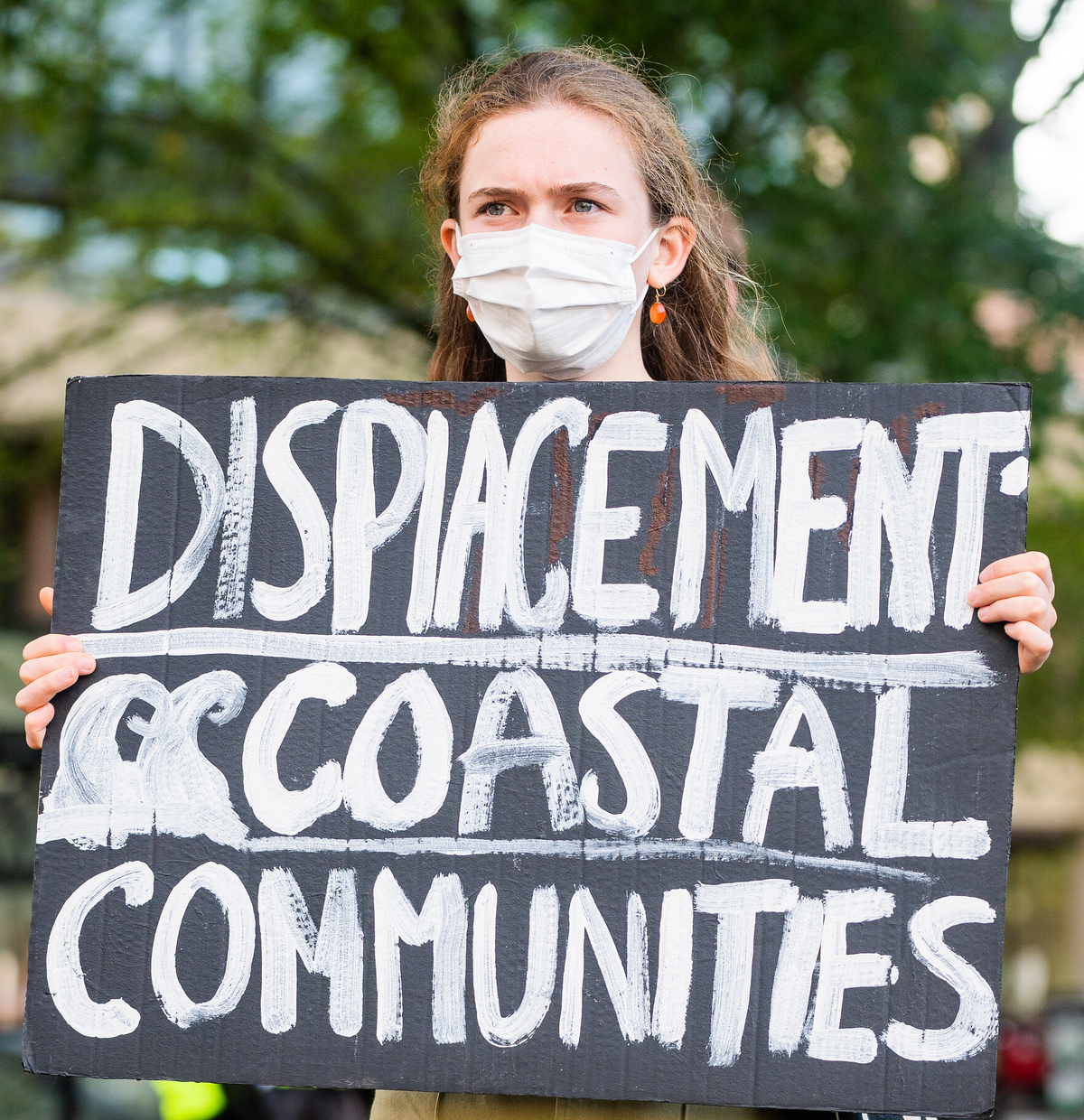
Lukas Flippo, Senior Photographer
Save the Sound’s Youth Eco Advocacy Corps met on Tuesday to discuss local environmental efforts, particularly the Transportation Climate Initiative and climate emergency resolutions.
For the last 40 years, Save the Sound has led environmental action to protect the climate, land and waterways throughout Connecticut, Westchester, New York City and Long Island. Through volunteer clean-up efforts, legal action and scientific research, Save the Sound works to protect the Long Island Sound and its surrounding environment. Save the Sound sponsors the Youth Eco Advocacy Corps, which brings young environmental activists in Connecticut together to share their sustainability initiatives. At its most recent monthly meeting, the group discussed efforts to implement climate emergency resolutions in their hometowns. Save the Sound leadership encouraged attendees to include the Transportation Climate Initiative in those resolutions.
“It’s really important that in this political climate we push for better,” said Alex Rodriguez, a climate advocate with Save the Sound, during the meeting. “There’s no time for mistakes. The state, the region and the nation have an unhealthy relationship with fossil fuels and it’s at our expense.”
In 2019, the New Haven Board of Alders passed a Climate Emergency Resolution, which officially declared a climate emergency in New Haven. CERs signal a government’s acknowledgment and support of taking emergency action to reverse climate change.
These resolutions are flexible, as municipalities can choose what specific steps to take to minimize their environmental impacts, reduce emissions or conserve resources. Many Connecticut municipalities have declared a climate emergency by passing a CER including Bridgeport, Bloomfield, Hartford, Mansfield, Middletown, New Britain, New Haven, Stamford and the 22 entities represented by the Southeastern Connecticut Council of Governments.
“It’s a bottom-up approach,” said Alyssa Benoit, a climate policy intern at Save the Sound. “If towns keep passing CERs, that signals to the state government that these towns think that it’s important.”
Benoit and Rodriguez encouraged the youth activists present at Tuesday’s meeting to include the implementation of TCI in their towns’ CERs.
TCI is a multi-jurisdictional effort to lower greenhouse gas emissions. Participating states will “cap” emissions resulting from carbon-intensive fuel, like diesel and gasoline, by requiring fuel wholesalers to enter an auction process. Over time, the cap will decrease to ultimately reduce greenhouse gas emissions from the transportation sector.
As transportation emissions constitute 38 percent of Connecticut’s total emissions, revenue raised from the auction process will go towards greener transportation initiatives in the state. TCI researchers predict that the program could generate over $1 billion in the next decade. The program’s conditions include a stipulation that half of that revenue must go towards communities overburdened by transportation pollution and underserved by existing transportation systems. Earlier this month, the New Haven Board of Alders’ City Services and Environmental Policy Committee passed a resolution supporting Connecticut’s implementation of TCI.
“I see TCI as a power redistributor, especially helping folks who don’t own a vehicle,” Rodriguez said. “It’s not fair that people who don’t own a vehicle are overburdened with air pollution, particularly in the inner cities.”
The group also discussed other projects and initiatives that could be included in local CERs. Corina Chang, a resident of West Hartford and a student at the College of William and Mary in Virginia, said that West Hartford is in the process of developing a CER. She reported that the resolution would be presented to the town council in December. The draft of the West Hartford CER, Chang said, currently includes the implementation of a climate change commission, a greenhouse gas inventory for the town and local government support of national carbon pricing legislation.
Adrian Huq, co-founder of the New Haven Climate Movement, advocated for New Haven’s CER in 2019. NHCM is currently pushing for more staff specifically focused on climate change initiatives in city government, such as the creation of a climate change city department or office of sustainability.
Looking back on the resolution passed in 2019, Huq voiced disappointment with the lack of progress made by the city’s Climate Emergency Mobilization Task Force, which was part of New Haven’s CER. Currently, three NHCM members sit on the task force, but Huq believes that dedicated city staff could make more of a difference.
“[The task force] kind of came back to bite us and slowed down the scope of our work,” they said. “We would definitely rather have staff to work on climate change in New Haven City Hall. Since the task force was formed, there’s not been much at all that’s come out of it.”
In early September, the Connecticut Department of Energy and Environmental Protection released its most recent greenhouse gas emissions inventory from 2018. The inventory revealed that the state’s greenhouse gas emissions from fuel-burning vehicles were increasing, in opposition to local and state emissions reduction goals. Similarly, on Sept. 17, a United Nations Framework Convention on Climate Change report estimated that, rather than a decrease in emissions, the globe is on track to achieve a 16 percent increase in emissions by the end of the decade.
“[This news] is depressing,” Huq said, after bringing up these reports at Tuesday’s meeting. “I thought we might have been on a downward trend with all these different commitments in place, but unfortunately, we are exceeding.”
The Save the Sound Youth Eco Advocacy Corps will meet next on Nov. 23 at 6 p.m.
Interested in getting more news about New Haven? Join our newsletter!







